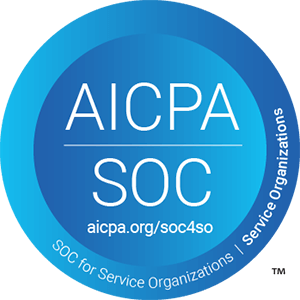How well employees perform can make or break a company’s success. You have a big job. You’re responsible for ensuring your team works their best, stays engaged, and helps your company succeed.
But it’s more challenging than it sounds.
You know that doing well in performance management is super important.
But why?
When you look at the numbers, they tell a powerful story. Organizations that use strong performance management systems do better. They’re more productive, their employees are happier, and their overall performance is improved.
Performance management is like a coach helping a player excel in a game. If things get off track, it’s also like a coach correcting the player’s moves. And in the end, it’s about either celebrating the player’s achievements or figuring out how to improve things.
In this blog post, we will break down the performance management process step by step.
From getting started to rewarding great work, we’ll give you the info and tips you need to do this important job.
What is the Process of Performance Management?

Performance management is a structured approach that involves several phases, each serving a specific purpose.
Let’s delve into each phase in more detail, addressing potential pain points and how to tackle them effectively.
Planning
Performance management begins with careful planning, ensuring that every step aligns with the organization’s goals.
1. Defining Measurable Performance Objectives for Each Employee or Team
Ambiguous objectives can lead to confusion and hinder motivation.
For instance, if a sales representative is simply told to “increase sales” without specific targets, they may not know how to focus their efforts.
It is best to define clear SMART objectives to ensure this clarity.
For example, setting a goal like “Increase monthly sales by 10% compared to the previous quarter” provides employees with a specific target to work toward. Here are few more employee SMART goal examples to check out.
2. Establishing Clear Expectations Regarding Job Responsibilities, Goals, and Performance Standards
Without clear expectations, employees may not understand their roles thoroughly.
This can result in overlapping responsibilities or tasks falling through the cracks. The best solution here is to outline job roles and responsibilities clearly.
For example, a job description for a project manager should specify responsibilities, such as “develop project timelines” and “communicate progress to stakeholders.”
3. Collaborating with Employees to Create Individual Development Plans (IDPs) or Performance Improvement Plans (PIPs), if Required
When performance issues arise, not addressing them effectively can lead to underperformance persisting.
In this scenario, you can collaborate with employees to create tailored plans.
For instance, if an employee struggles with time management, a PIP might include specific strategies for better time allocation, such as using time management apps or attending relevant workshops.
4. Setting Time-Bound Goals that Align with the Organization’s Objectives
Goals that need alignment with the organization’s mission and vision can result in employees working towards objectives that don’t benefit the company. You can ensure that goals align with organizational objectives.
For example, if a company aims to expand into a new market, an aligned individual goal might be to “research and identify potential markets for expansion within six months.”
Coaching
Coaching is an ongoing process that involves continuous guidance, training, and feedback to help employees reach their performance objectives. Here’s a detailed look at this phase:
1. Ongoing Two-Way Feedback
If feedback is given sporadically or is only top-down, employees might need help understanding where they stand or how to improve.
So, implement regular feedback sessions.
For instance, a manager could provide constructive feedback during weekly one-on-one meetings, discussing recent accomplishments and improvement areas. This regular feedback loop keeps the communication channel open.
2. Skill Gaps

Employees might lack specific skills crucial for their roles, hindering their performance.
So, it becomes necessary to provide targeted training opportunities.
For example, if a marketing team member needs to enhance their social media marketing skills, enrolling them in a specialized online course or workshop can bridge the skill gap.
3. Unclear Performance Standards
Without clear standards, employees might not know what’s expected of them, leading to inconsistency and confusion.
Clearly define performance standards.
For instance, in customer service, a standard could be “respond to customer queries within 24 hours.” This specific standard sets a clear expectation for employees.
4. Lack of Collaboration
If there’s a disconnect between teams or team members, it can hinder overall performance.
Encourage cross-functional collaboration.
For example, in software development, regular joint meetings between developers and QA testers can facilitate collaboration. The team can improve overall product quality by discussing challenges and solutions.
Monitoring
Monitoring is a consistent and crucial part of performance management, ensuring that progress is tracked and adjustments are made as necessary:
1. Inconsistent Monitoring
Failure to consistently monitor a team’s progress in a project management scenario can result in missed deadlines or project scope creep.
You can implement regular check-ins or status meetings to ensure consistent monitoring.
For instance, in a software development project, weekly sprint meetings can serve as checkpoints to review progress, address challenges, and realign objectives.
2. Lack of Data-Driven Insights
Without data-driven insights, managers may struggle to identify areas for improvement or provide objective feedback.
So, utilize Key Performance Indicators (KPIs) to track performance objectively.
For instance, KPIs like average response time or customer satisfaction scores can provide quantifiable data to assess performance in a customer service role.
3. Providing Only Positive Feedback
Managers may hesitate to provide constructive feedback, fearing it may demotivate employees.

So, encourage a culture of feedback that includes both positive and constructive elements.
For example, in a sales team, recognizing excellent customer relationship management while also addressing areas needing improvement, such as meeting sales quotas, creates a balanced approach to feedback.
4. Ineffective Feedback Delivery
Providing vague feedback that lacks specificity can leave employees unsure about what needs improvement.
Make sure you deliver specific and actionable feedback.
For instance, in a marketing role, instead of saying, “Your campaign needs improvement,” provide detailed feedback like, “Consider refining the target audience to increase engagement, and A/B test different ad creatives for better click-through rates.”
5. Neglecting Employee Input
Monitoring often focuses solely on managerial observations, overlooking valuable insights from employees.
Engage employees in the monitoring process by soliciting their feedback.
For instance, in a product development team, team members can provide insights into challenges they face during regular meetings, enhancing the monitoring process.
6. Reactive Rather Than Proactive Monitoring
Waiting until issues become significant before addressing them can result in missed opportunities for improvement.
Implement proactive monitoring. In IT support, for instance, regularly analyzing incident reports and addressing emerging trends can help prevent major system outages.
7. Neglecting Positive Reinforcement
Focusing solely on areas needing improvement can create a demotivating environment.
So, balance constructive feedback with positive reinforcement. Acknowledging an employee’s improved performance in one subject while addressing struggles in another encourages holistic growth.
Reviewing
Performance management includes a structured review process that provides a comprehensive understanding of where employees stand:
1. Scheduling Periodic Performance Evaluations
Inconsistent or infrequent performance evaluations can lead to a lack of clarity regarding individual progress and expectations.
Here, you can establish a regular schedule for performance evaluations.
For example, conducting quarterly or annual reviews ensures that employees receive consistent feedback and know when to expect it.
2. Assessing Employee Performance Against Set Goals and Expectations
If performance assessments lack a clear link to defined goals and expectations, it can lead to a disconnect between individual contributions and organizational objectives.
You can ensure that performance assessments align directly with the goals and expectations during the planning phase.
For instance, if an employee aims to increase customer satisfaction scores, the performance evaluation should include metrics and feedback related to this objective.
3. Identifying Strengths and Areas for Improvement
Failing to identify strengths and improvement areas can limit an employee’s professional growth. In such cases, you can encourage a balanced approach in evaluations.
Highlight strengths to acknowledge accomplishments and boost morale while also addressing areas for improvement constructively.
For example, if an employee excels in project management but struggles with time management, provide specific feedback on both aspects.
4. Modifying Goals Based on Performance Appraisal Results
Failing to adjust goals in response to performance results can hinder progress and motivation.

So, be flexible with goals. If an employee consistently exceeds targets, consider raising the bar for future goals.
Conversely, if goals consistently prove unattainable, collaborate with the employee to adjust them to more realistic levels.
Learn More: Building an Effective Performance Appraisal System
5. Reviewing the Performance Management Process, If Necessary
An outdated or ineffective performance management process can hinder overall organizational growth.
Ensure that you regularly assess the effectiveness of your performance management process. Solicit feedback from both employees and managers to identify areas for improvement.
For example, if the current process could be more convenient and convenient, consider streamlining it to make it more efficient.
6. Give Actionable Feedback
Vague or non-actionable feedback provides little guidance for improvement.
So, as an HR, you must offer specific, actionable feedback during performance evaluations.
Instead of saying, “Your communication skills need improvement,” say, “Consider taking a course on effective communication to enhance your interpersonal skills.”
Fast Track Your Performance
Reviews
Rewarding/Action
The performance management process concludes with actions aimed at recognizing and motivating employees:
1. Recognition of Good Performance
Failing to recognize and celebrate good performance can lead to employee disengagement.
So, implement a recognition system that acknowledges and celebrates outstanding achievements.
For example, introduce an “Employee of the Month” award or a peer recognition program where colleagues can acknowledge each other’s contributions.
2. Motivating and Retaining Top Performers
Neglecting to motivate and retain high-performing employees can result in their departure from the organization.
So make sure your company offers incentives to top performers, such as performance-based bonuses, career development opportunities, or additional responsibilities.
Recognize their contributions publicly to reinforce their value to the organization.
3. Addressing Performance Issues, If Any
Ignoring performance issues can lead to a decline in overall team morale and productivity. Promptly address performance issues with open and honest communication.
Develop an action plan to support employees in overcoming challenges and improving their performance.
4. Implementing Formal Performance Improvement Plans, If Necessary
Inconsistent or ineffective handling of performance issues can result in underperformance persisting.
Formal Performance Improvement Plans (PIPs) may be necessary for employees facing persistent challenges. PIPs should include specific, time-bound objectives and a clear path for improvement.
Regular check-ins should be part of the plan to track progress.
5. Documenting Corrective Actions Taken
Failure to document corrective actions can lead to misunderstandings and legal issues.
Maintain thorough records of all actions taken, including discussions, warnings, and improvement plans. This documentation is crucial for transparency, accountability, and legal compliance.
Your All-in-One Performance Management Solution With Peoplebox
The performance management process is pivotal for organizational success, involving phases like planning, coaching, monitoring, reviewing, and rewarding. To excel, HR professionals must adapt to evolving workplace demands. For that, efficient performance management tools become essential. Peoplebox allows you to navigate change, keeping their organizations at the forefront of talent management.
Peoplebox offers comprehensive features for seamless performance management. It simplifies performance reviews, enabling goal setting and feedback collection. Weekly check-ins promote ongoing communication, ensuring goals stay on track.
What’s more with Peoplebox?
- Easily integrates with existing HR systems and Slack.
- Navigating the platform is effortless.
- Advanced analytics for informed decisions.
- Tailor it to your unique needs.
- Ongoing assistance from our dedicated team.
Peoplebox is your strategic advantage. If you still have any doubts, you can request your free demo with us today and experience the future of performance management.
FAQs
Q. How does goal setting work within the performance management process?
Goal setting is a fundamental component of the performance management process, playing a pivotal role in aligning individual and team objectives with the organization’s broader goals.
Here’s how goal-setting functions within this process:
- Defining clear and measurable objectives: The first step in goal setting is to define clear and measurable performance objectives for each employee or team. These objectives should be specific, achievable, relevant, and time-bound (SMART), making them easier to track and evaluate.
- Aligning with organizational goals: The objectives set during the performance management process steps must align with the organization’s strategic goals and priorities. This alignment ensures that every employee’s efforts contribute directly to the organization’s success.
- Establishing performance expectations: Goal setting also involves setting performance expectations and standards. Employees need to understand what is expected of them regarding their job responsibilities and attaining their goals.
- Collaboration and development planning: Goal setting should be collaborative. Managers and employees work together to create these goals, fostering a sense of ownership and commitment. During this phase, individual development plans (IDPs) or performance improvement plans (PIPs) may also be developed based on employees’ specific needs.
- Using goal-setting methods: Various goal-setting methods can be employed to structure objectives effectively. One popular method is using Objectives and Key Results (OKRs). OKRs provide a framework for setting and tracking goals, ensuring they are challenging yet achievable.
Q. What role does continuous feedback play in the performance management process?
Continuous feedback is a dynamic and ongoing aspect of the performance management process, fostering a culture of continuous improvement and employee development.
Let’s explore the crucial role it plays:
- Ongoing two-way communication: Continuous feedback involves regular and two-way communication between employees and their managers or peers. It’s not limited to annual or periodic reviews but occurs consistently throughout the year.
- Training and development: Through continuous feedback, employees receive timely guidance and support to enhance their skills and capabilities. Managers identify areas where employees excel and areas where improvement is needed, allowing for tailored training and development plans.
- Outlining standards and goals: Feedback helps outline and clarify performance standards and goals. When employees receive feedback on their work, they better understand what is expected, leading to improved performance alignment.
- Collaboration: Continuous feedback promotes collaboration and open communication. Employees feel comfortable discussing their challenges and successes, fostering a more transparent and collaborative work environment.
- Real-time adjustments: Continuous feedback enables real-time adjustments if issues or roadblocks arise. Employees can receive guidance on how to overcome challenges promptly, preventing problems from escalating.
- Recognition and motivation: Positive feedback and recognition for a well-done job are essential motivators. Continuous feedback provides an avenue for acknowledging and appreciating employees’ contributions, boosting morale and engagement.
- Constructive improvement: In addition to positive feedback, continuous feedback also addresses areas needing improvement. Constructive feedback is provided, along with actionable steps for employees to enhance their performance.
Q. What are the typical steps involved in the performance management process, and why are they important?
The performance management process steps typically involves several key steps, each with its unique significance:
- Goal setting: This step involves defining clear and measurable employee performance objectives. It’s crucial because it aligns individual and team efforts with organizational goals, providing a roadmap for success.
- Performance monitoring: Regularly observing and tracking employee performance is vital for timely interventions and ensuring progress aligns with established goals and standards.
- Feedback and coaching: Continuous feedback and coaching support employee development, improve performance, and maintain open lines of communication between employees and managers.
- Performance review and assessment: Periodic performance evaluations assess employee achievements against set goals and identify areas for improvement. They are crucial for making informed decisions about promotions, raises, or further development.
- Goal adjustment: Adjusting goals based on performance appraisal results ensures that expectations remain relevant and adaptable to changing circumstances, promoting agility and flexibility.
- Rewards and corrective actions: Recognizing and rewarding good performance motivates employees and reinforces desired behaviors. Addressing performance issues through corrective actions helps employees improve and align with expectations.
Q. How does continuous performance management differ from traditional annual performance reviews?
Continuous performance management and traditional annual performance reviews differ significantly in several ways:
- Frequency of feedback: Continuous performance management emphasizes ongoing feedback and coaching, often occurring in real-time or at regular intervals (e.g., weekly or monthly). In contrast, traditional reviews typically occur once a year.
- Focus on development: Continuous performance management strongly emphasizes employee development and growth, fostering a culture of improvement. Traditional reviews may focus more on evaluating past performance.
- Flexibility: Continuous performance management allows for flexibility in goal setting and adjustments, enabling employees to adapt to changing priorities and circumstances. Traditional reviews often have fixed annual goals.
- Two-way communication: Continuous performance management encourages two-way communication, where employees can also provide feedback to their managers. Traditional reviews are often one-sided.
- Timeliness: Continuous feedback allows for timely recognition of achievements and prompt addressing of issues, leading to more immediate action. Traditional reviews may result in delayed responses.
- Technology integration: Continuous performance management often leverages technology and software platforms to facilitate ongoing feedback, tracking, and goal setting. Traditional reviews may rely on paper-based or manual processes.
- Employee engagement: Continuous performance management can contribute to higher employee engagement by providing regular opportunities for recognition and improvement. Traditional reviews may not have the same impact on engagement.
Q. What are some examples of performance management process models used in specific industries?
Performance management process models can vary across industries to address specific needs and challenges.
Here are some performance management process examples:
- Healthcare: In healthcare, the Balanced Scorecard model is often adapted to measure performance across dimensions like patient outcomes, quality of care, operational efficiency, and regulatory compliance.
- Manufacturing: Lean Six Sigma principles are commonly applied in manufacturing to improve efficiency and reduce defects. Performance management models in this sector often focus on production metrics and quality control.
- Information technology (IT): The IT industry may use the ITIL (Information Technology Infrastructure Library) framework to manage performance by aligning IT services with business needs and priorities.
- Financial services: Risk management and compliance play a significant role in financial services. Performance management models may incorporate risk assessment and regulatory compliance metrics.
- Retail: Retail organizations often use customer-centric performance models that consider metrics like customer satisfaction, sales per square foot, inventory turnover, and employee productivity.
- Education: In education, performance management models may emphasize student outcomes, teacher effectiveness, and curriculum alignment with educational standards.
- Nonprofits: Nonprofit organizations may use models that focus on fundraising effectiveness, program impact assessment, and volunteer management.
Q. What is the significance of a performance management process model, and can you provide examples of such models?
A performance management process model serves as a structured framework that organizations can follow to optimize their performance management efforts. It provides a roadmap for implementing and improving the process, ensuring consistency and alignment with organizational goals.
Here are some key aspects of such models:
Significance of a Performance Management Process Model:
- Consistency: Models help standardize the performance management process across the organization, ensuring that all employees are evaluated and managed using a consistent set of principles and criteria.
- Alignment: Models are designed to align individual and team performance with the organization’s strategic goals, ensuring that everyone is working towards common objectives.
- Efficiency: Models often include best practices and guidelines, leading to more efficient and effective performance management processes and saving time and resources.
- Continuous improvement: Many models are designed to be iterative, allowing organizations to continuously improve their performance management processes based on feedback and results.
Examples of Performance Management Process Models:
- Balanced scorecard: This model measures performance across multiple dimensions, including financial, customer, internal processes, and learning and growth. It provides a balanced view of an organization’s performance.
- Management by objectives (MBO): MBO is a model where employees and managers collaboratively set specific, measurable, achievable, relevant, and time-bound (SMART) objectives. Progress toward these objectives is regularly monitored.
- Six sigma: While initially a quality improvement methodology, Six Sigma has been applied to performance management. It focuses on reducing process variation and improving performance metrics.
- Continuous performance management (CPM): CPM is a modern approach emphasizing ongoing feedback and coaching rather than annual or periodic reviews. It often includes the use of technology for real-time tracking and feedback.
- 360-degree feedback: This model gathers feedback from multiple sources, including peers, managers, subordinates, and self-assessment. It provides a comprehensive view of an employee’s performance.








